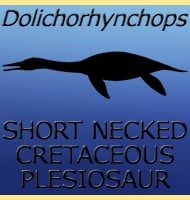Dolichorhynchops
In Depth The first Dolichorhynchops specimens were recovered in 1900 by George F. and Charles H. Sternberg from the Smokey Hill Chalk Formation. After being named by Samuel Wendell Williston in 1902, the type specimen has been a regular feature in the display of the Museum of Kansas. The establishment of two additional species (D. … Read more
